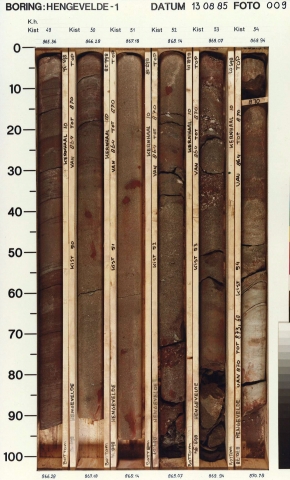Succession of grey to white or pink to red sandstone beds of variable thicknesses, alternating with mudstones and rare coal seams.
Sands are fine- to very coarse-grained, occasionally grading up to pebble size, moderately-sorted and subangular. Sandstones occur in channel fills of 5 to 20 m thick, yielding blocky log patterns, can occur stacked into massive intervals of up to 100 m thick. Intercalated mudstone sections predominantly light-grey or greenish grey.
Coal seams: associated with the grey mudstone intercalations of 5 to 50 m thick. Purple or red-brown intervals become dominant in the youngest parts.
The massive, thick sandstone intervals: amalgamated braided fluvial channel fills.
Thinner sand-/siltstone beds and fines: overbank deposits, grey colours in the fines and the associated coal seams indicate predominant poorly-drained overbank soil conditions. The upward shift to variegated and red colours reflects an increase in aridity and improving soil drainage.
Marked by the first appearance of thick-bedded sandstones. This is generally accompanied by a marked decrease in the frequency of coal seams, compared with the underlying Maurits Formation.
Placed at the top of a major sandstone bed, which is overlain by an interval of at least 40 m thick which consists predominantly of mudstones. The Tubbergen Formation grades into the Hellevoetsluis Formation in the province of Utrecht.
